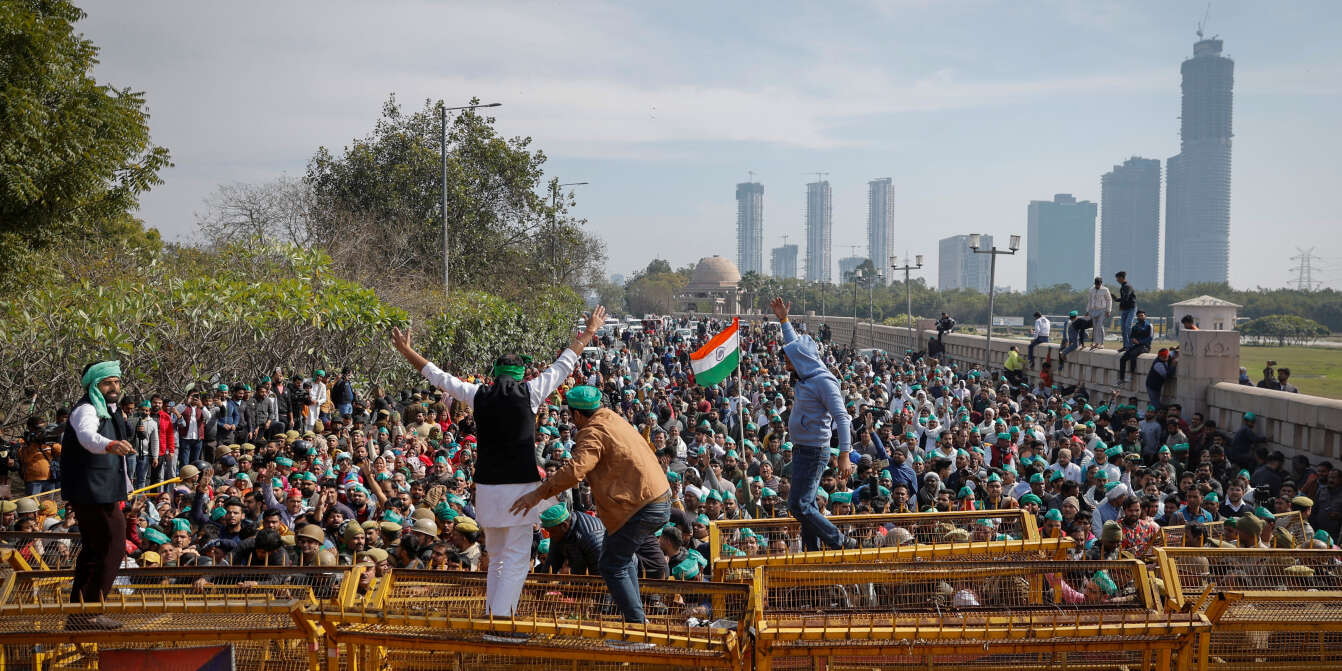Indian Farmers Protest 2024

The resurgence of farmer protests in India, known as Farmer Protest 2.0, marks a continuation of the agrarian discontent that gripped the nation in 2020-2021. Initiated on the morning of 13th February 2024, this protest echoes the demands of its predecessor, emphasizing the need for government assurance on minimum support prices (MSP) for crop production. With hundreds of thousands of farmers converging towards the National Capital Region of New Delhi, the protest underscores the unresolved grievances and persistent challenges faced by agricultural communities.
Renewed Demands and Mobilization
The central demand of the 2024 farmer protest, akin to its antecedent, revolves around the guarantee of MSP for agricultural produce. Despite the withdrawal of the controversial farm acts by the Indian government post-2021 protests, farmers remain unconvinced of the state's commitment to safeguarding their economic interests. The protest, spearheaded by a coalition of farmer organizations including the Samyukta Kisan Morcha and the Kisan Mazdoor Morcha, reflects a unified front representing over 250 farmer unions.
Tensions at the Borders, Dilli Chalo
As farmers advance towards New Delhi/'Dilli Chalo', encounters with law enforcement agencies escalate tensions at border points. Police deployment, barricades, and the imposition of Section 144 underscore the government's efforts to contain the protest. Instances of tear gas, rubber bullets, and barricades characterize the confrontations, reminiscent of the clashes witnessed during the 2020-2021 protests. The Shambu, Gazipur, and Tikri borders emerge as focal points of contention, symbolizing the determination of farmers to assert their demands despite resistance.
What is Minimum Support Price(MSP)?
The Minimum Support Price (MSP) serves as a crucial component of India's agricultural policies, aiming to provide a safety net for farmers and ensure food security across the nation. Introduced initially in the 1960s as an incentive for farmers to adopt modern agricultural practices and boost productivity, the MSP has evolved over the years into a market intervention and income support scheme.
Essentially, the MSP is an advisory price set by the government to guarantee farmers a minimum profit for their harvest. It is not a procurement or issue price but rather a signal intended to safeguard farmers' interests. By offering this minimum price, the government seeks to incentivize farmers to continue their agricultural activities while also bolstering food security for the country.
However, the effectiveness of the MSP policy has varied significantly across different states and agricultural commodities. While it has succeeded in certain regions and for specific crops, its impact has been less pronounced in others. Awareness among farmers about the existence of MSP is relatively low, with only 23% being aware of it. Similarly, knowledge about MSP procurement agencies remains limited, with only about 20-25% of wheat and paddy produce being sold at MSP rates.
Despite its shortcomings, the MSP continues to play a crucial role in providing stability to the agricultural sector and ensuring farmers' livelihoods. As India grapples with agricultural challenges and strives to enhance farmer welfare, the MSP remains a fundamental tool in the government's arsenal to support and uplift agricultural communities across the nation.
Challenges and Controversies
The 2024 farmer protest unfolds amidst controversies and challenges, complicating the narrative. The suspension of internet services in Haryana, allegations of police brutality, and the involvement of certain factions.
Leadership Dynamics and Organizational Framework
The leadership dynamics within the protest movement undergo shifts, with new figures emerging to guide the course of action. Jagjit Singh Dallewal of BKU (Dallewal) and Sarvan Singh Pandher of Kisan Mazdoor Morcha assume prominent roles in steering the protest, highlighting the decentralized and diverse nature of farmer mobilization efforts. While certain leaders from previous protests remain inactive, the protest retains its grassroots character, rooted in the collective aspirations and grievances of agricultural communities.
The 2024 Farmer Protest 2.0 in India signifies a continuation of the struggle for agrarian rights and economic justice. As farmers converge towards New Delhi, their demands for MSP assurance reverberate across the nation, drawing attention to the systemic challenges plaguing the agricultural sector. Despite facing obstacles and controversies, the protest underscores the resilience and determination of farmers to assert their rights and hold the government accountable. As the protest unfolds, it serves as a poignant reminder of the enduring quest for dignity and empowerment among India's agricultural communities.









